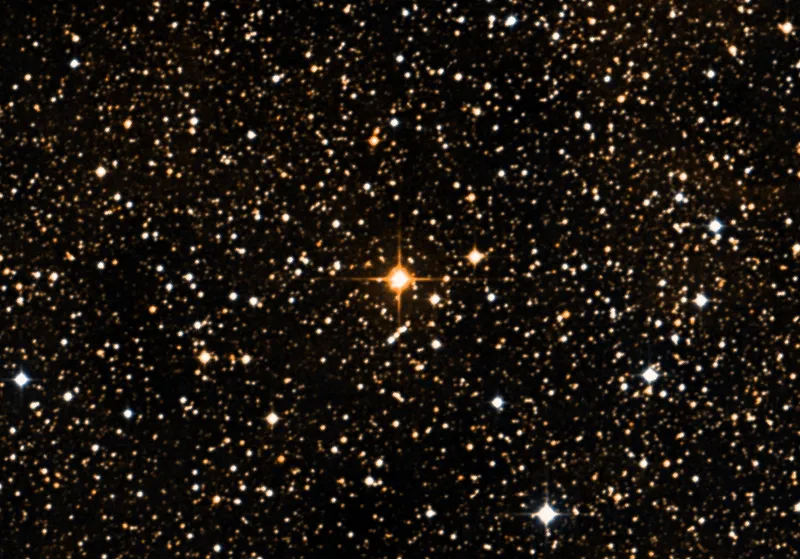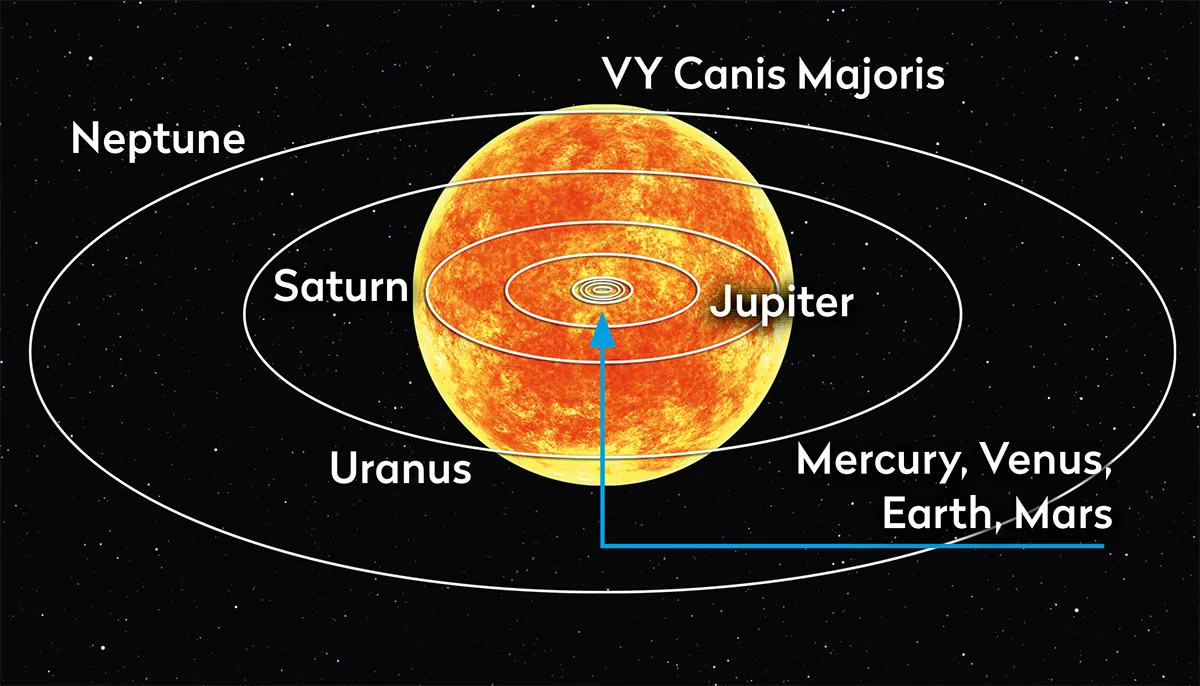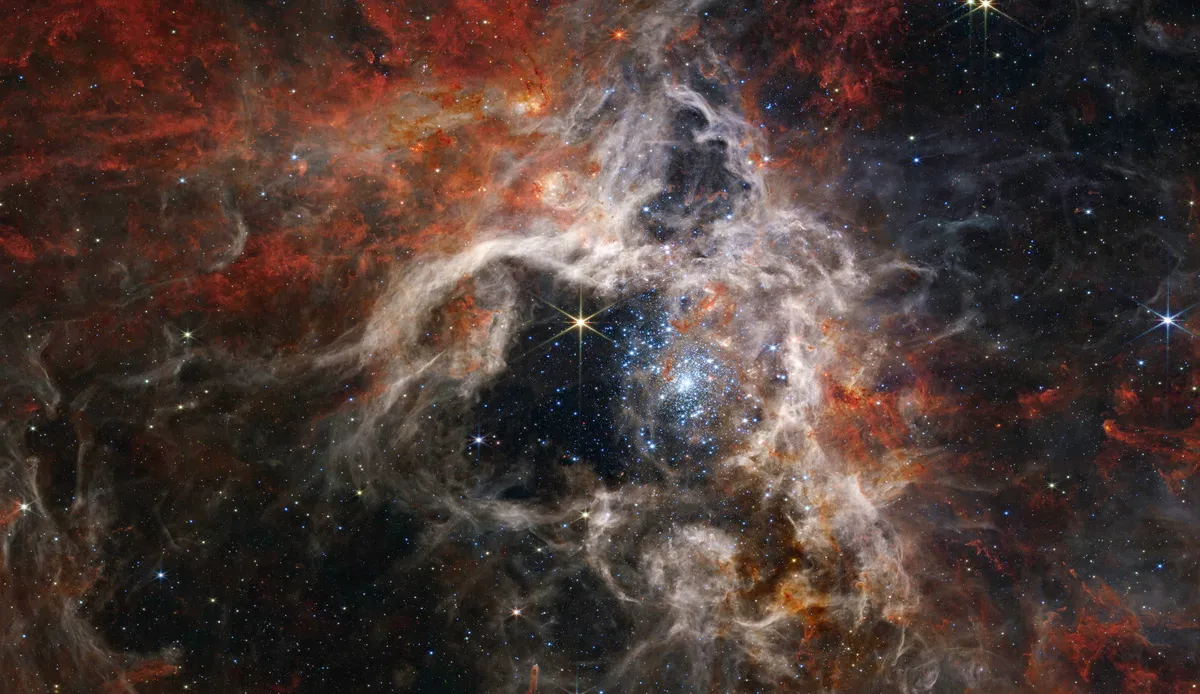You'll often see the Sun described as an average star, but it isn't really. In terms of size, it is in the top 12% of all the stars in the Universe.
Big, but not the biggest. It is the stars in the top 0.00003% that are the absolute monsters.
UY Scuti is often given the accolade of the Universe's biggest star. If it replaced the Sun in the Solar System then, according to one estimate, its outer edge would sit beyond the orbit of Jupiter.
You could fill UY Scuti up with 5 billion Suns, 7 trillion Jupiters or 7 quadrillion Earths.
Discover our list of the biggest things in the Universe

How to see UY Scuti
UY Scuti's huge size makes it over 300,000 times brighter than the Sun, but isn't a particularly bright star in our night sky.
You can find it almost 6,000 lightyears away in the constellation of Scutum, The Shield, which is only visible in the Southern Hemisphere.
UY Scuti is too dim to be seen with the naked eye, instead straddling the borderline between a big pair of binoculars and a small telescope.
Its brightness varies over time because it's pulsating, with a period of about two years.
It also resides in the esoterically named Zone of Avoidance, an area of the sky obscured by the Milky Way.

Is UY Scuti really the biggest star?
There is still some debate about whether UY Scuti really is the largest known star.
So much of estimating the size of these huge stars relies on complex modelling work that has a wide margin of error.
Other contenders for the crown of the biggest stars include VY Canis Majoris and WOH G64 (located in the Large Magellanic Cloud, a small satellite galaxy of our Milky Way).

All of these stars are red supergiants - the final stage in the lives of the most massive stars.
They have moved from burning hydrogen in their cores, to burning hydrogen in a shell around their cores.
This causes the outer layers of the star to surge outwards, hence their large size. The Sun will do something similar, but less extreme one day to become a red giant instead.
However, physical size is only one way of conferring the title of biggest star.
An alternative method would be to go by mass.
UY Scuti tips the scales at between 7 and 10 solar masses (where one solar mass is the mass of the Sun).
That's a relative lightweight compared to the most massive stars around.

Most massive stars
The most massive stars ever found are all in the Tarantula Nebula, a sprawling cloud of gas and dust also in the Large Magellanic Cloud.
The heaviest among them is a star known as BAT99-98, which weighs in at 226 solar masses.
A star's brightness – or luminosity – is linked to its mass and BAT99-98 shines five million times brighter than the Sun or almost fifteen times brighter than UY Scuti.
Their huge mass means that these stars experience intense gravity in their cores and burn through their nuclear fuel at high speed, living fast and dying young.
